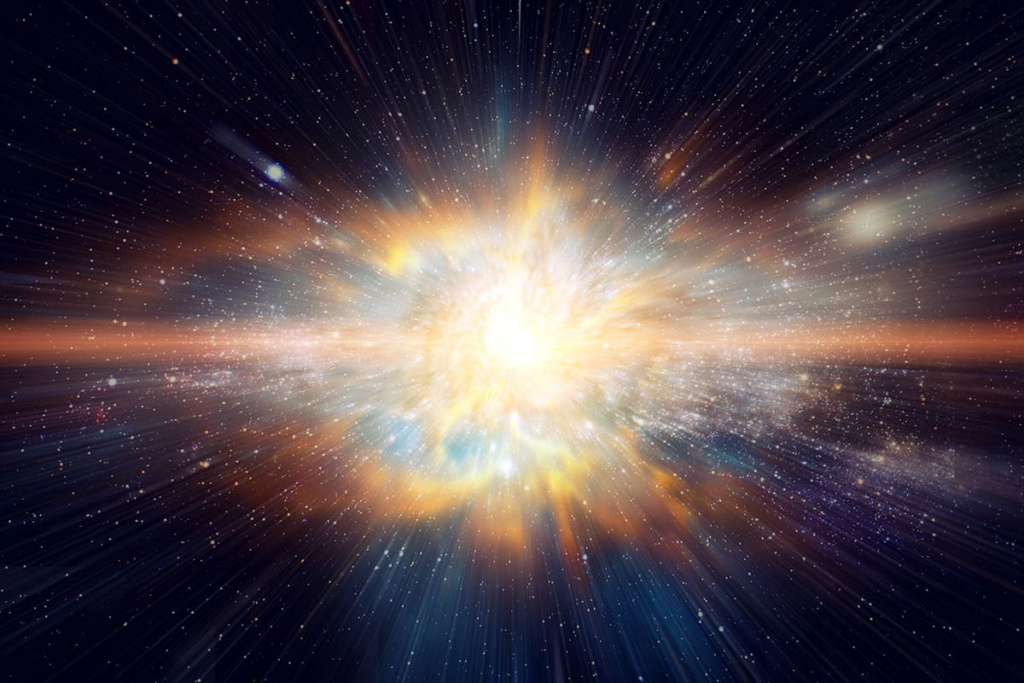Continua após a publicidade
A vasta extensão do universo sempre foi uma fonte de admiração e intriga para a humanidade. 🌌 Ao contemplarmos as estrelas, somos lembrados das grandes narrativas que se desenrolam ao longo de bilhões de anos. Entre essas narrativas, encontra-se uma questão que cativou astrônomos e filósofos: como o universo poderia encontrar seu fim definitivo? Essa questão nos leva a uma história de detetive cósmica, onde as pistas estão espalhadas pelos céus e as teorias são tão vastas quanto o próprio cosmos.
Ao embarcarmos nessa jornada de descoberta, mergulhamos nos pensamentos de cientistas renomados como Stephen Hawking e Roger Penrose, que abriram caminho para nossa compreensão do ciclo de vida do universo.
Continua após a publicidade
Neste artigo, exploraremos diversas teorias fascinantes que buscam responder a essa questão monumental. Da expansão implacável prevista pelo cenário do "Big Freeze" ao dramático "Big Crunch" e ao enigmático "Big Rip", cada teoria oferece uma perspectiva única sobre o destino do universo. À medida que desvendamos essas ideias complexas, meu objetivo é torná-las acessíveis e envolventes, convidando você a refletir sobre essas possibilidades cósmicas com clareza e curiosidade. Assim como o universo é uma tapeçaria de inúmeras estrelas, nossa exploração entrelaçará insights científicos e hipóteses imaginativas.
Então, como começar a contemplar o fim de tudo o que conhecemos? Será um lento desaparecimento no esquecimento ou um evento cataclísmico? 🪐 Junte-se a mim enquanto desvendamos os mistérios da potencial extinção do universo, reunindo as evidências e teorias que nos levam à compreensão do nosso destino cósmico. Por meio dessa exploração, espero despertar sua curiosidade e aprofundar sua apreciação pelo vasto e mutável universo que chamamos de lar.
Continua após a publicidade
Compreendendo o Fim do Universo
O conceito do fim do universo é fascinante e assustador. Ao contemplar um tópico tão vasto, é fácil se sentir sobrecarregado. No entanto, dividi-lo em partes compreensíveis pode nos ajudar a entender melhor as teorias e possibilidades que cercam o destino final de tudo o que conhecemos. 😮
O Grande Congelamento
Um dos cenários mais discutidos é o do Grande Congelamento, também conhecido como Morte Térmica do Universo. Essa teoria sugere que o universo continuará a se expandir até atingir um estado de entropia máxima.
O que é Entropia?
Entropia, em termos simples, é a medida da desordem dentro de um sistema. À medida que o universo se expande, a energia se torna mais uniformemente distribuída, levando a um estado em que não há mais calor ou energia suficiente para sustentar o movimento ou a vida.
Sinais do Grande Congelamento
O resfriamento gradual de estrelas e galáxias é um sinal do Grande Congelamento. Ao longo de bilhões de anos, as estrelas se extinguirão, as galáxias desaparecerão e o universo se tornará uma extensão fria e escura.
- As estrelas esgotarão seu combustível nuclear.
- As galáxias vão se afastar.
- Os buracos negros evaporam com o tempo.

A Grande Crise
Outra hipótese intrigante é a do Big Crunch. Este cenário apresenta uma visão cíclica do universo, sugerindo que ele poderia eventualmente parar de se expandir e começar a se contrair.
Como a grande crise se desenrolaria?
Se a expansão do universo desacelerar e se reverter, toda a matéria poderá eventualmente colapsar de volta a um estado singular. É como voltar no tempo no relógio cósmico, onde as galáxias se aproximam até que tudo converja para um ponto singular.
Será que o Big Crunch pode levar a outro Big Bang?
Alguns teóricos propõem que o Big Crunch pode levar a um novo Big Bang, dando início a outro universo. Essa ideia se alinha ao conceito de um universo cíclico, passando perpetuamente por fases de expansão e contração.
O Grande Rasgo
Em contraste com o Big Crunch, o Big Rip sugere um fim violento para o universo. Aqui, a expansão não desacelera; ela acelera a ponto de destruir galáxias, estrelas e até estruturas atômicas.
Compreendendo a energia escura
A energia escura é a força misteriosa que impulsiona a expansão acelerada do universo. Se sua influência se intensificar, poderá superar todas as forças gravitacionais, levando a um cenário em que tudo será literalmente destruído.
O que acontece durante o Big Rip?
– As galáxias estão se separando.
– Os sistemas solares se desintegram.
– Os átomos acabam se despedaçando.
Perguntas frequentes
Existe alguma evidência que apoie essas teorias?
Astrônomos e físicos reuniram evidências que apoiam cada teoria em graus variados. Observações da radiação cósmica de fundo em micro-ondas, da distribuição de galáxias e da taxa de expansão do universo contribuem para a nossa compreensão, mas nenhuma teoria é comprovada de forma conclusiva.
Os humanos podem fazer algo para evitar esses resultados?
Dadas as escalas de tempo astronômicas envolvidas, esses eventos estão além da influência humana. Nosso foco permanece em compreender o universo, em vez de alterar seu destino.
Quanto tempo levará para que qualquer um desses cenários ocorra?
Estamos falando de escalas de tempo de bilhões a trilhões de anos. Por enquanto, o universo está em expansão, com muitos mistérios a serem desvendados. 🌌
Conclusão
Concluindo, “A Morte do Universo: Como Tudo Poderia Acabar?” nos convida a mergulhar na dança cósmica da criação e da destruição, uma dança que intriga a humanidade há séculos. À medida que viajamos pelos possíveis cenários de como o universo pode chegar ao seu fim — do resfriamento gradual no Big Freeze à implosão cataclísmica do Big Crunch —, nos encontramos não apenas aprendendo sobre fenômenos astrofísicos, mas também refletindo sobre nosso lugar neste vasto cosmos. O destino final do universo continua sendo um dos mistérios mais profundos da astronomia, desafiando-nos a pensar além dos limites da nossa própria existência e a apreciar a escala e a complexidade do cosmos.
Ao compreender esses finais potenciais, adquirimos insights sobre as leis da física que governam tudo ao nosso redor, desde as menores partículas até as maiores galáxias. Esse conhecimento enriquece nossa apreciação do universo e inspira uma curiosidade mais profunda sobre o mundo natural. Ao considerarmos essas conclusões cósmicas, somos lembrados da resiliência e da impermanência inerentes ao universo, encorajando-nos a valorizar o momento presente e a beleza do cosmos.
Obrigado por dedicar seu tempo para explorar esta jornada cósmica conosco. Seu interesse e entusiasmo em aprender sobre o universo são o que impulsiona o avanço do conhecimento e inspira futuras gerações de astrônomos, cientistas e mentes curiosas. À medida que você continua a observar as estrelas e contemplar os mistérios do universo, lembre-se de que cada pergunta que você faz e cada descoberta que você faz nos aproxima um passo da desvendação dos segredos do cosmos. 🚀✨




